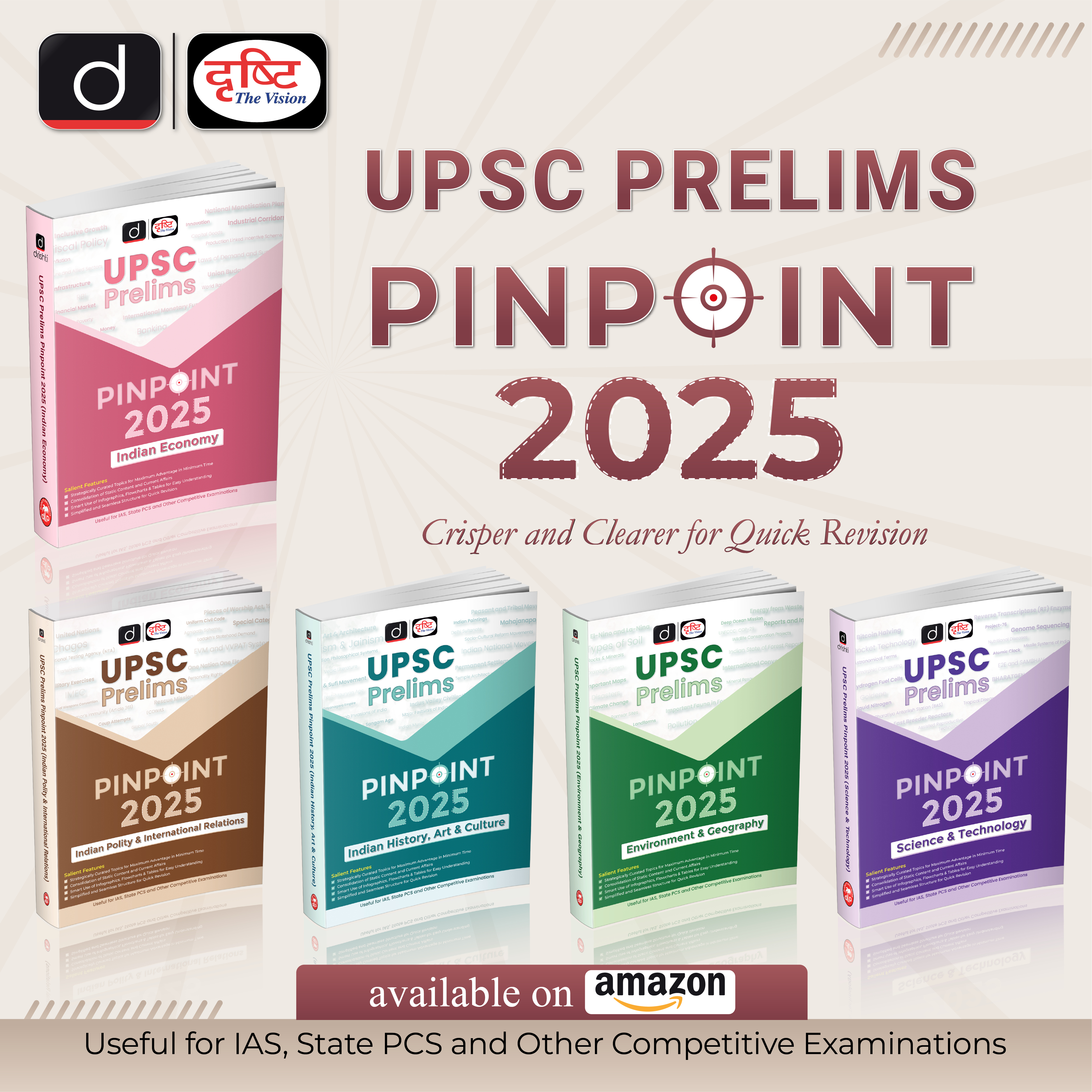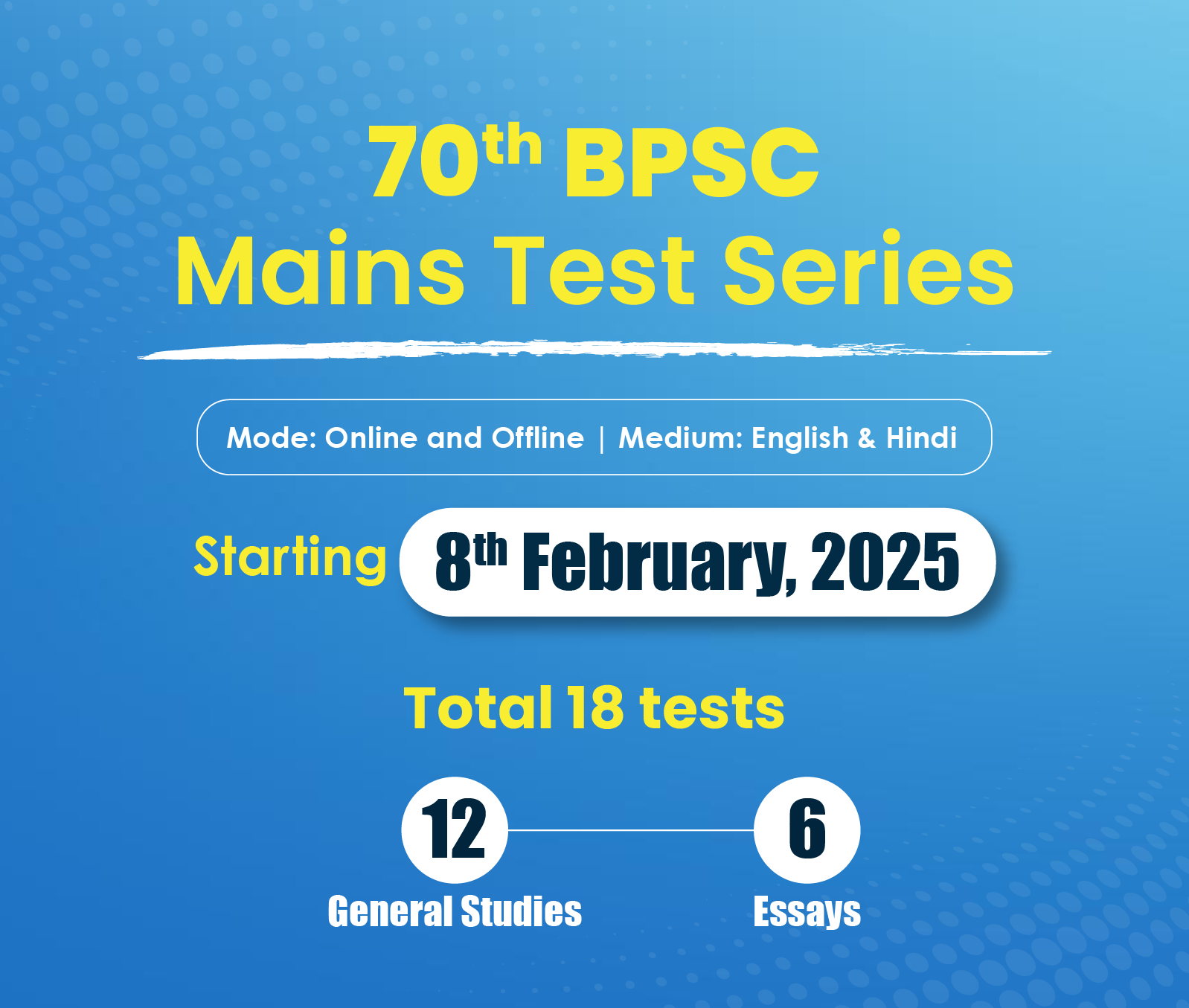Uttar Pradesh Switch to Hindi
Uttar Pradesh's Path to Economic Leadership
Why in News?
Recently, the Chief Minister highlighted Uttar Pradesh’s rapid growth towards becoming India’s top economy, driven by infrastructural, industrial, and agricultural advancements.
Key Points
- GSDP Growth: UP's Gross State Domestic Product (GSDP) is expected to surpass Rs. 32 trillion by FY25, up from Rs.26 trillion in FY24.
- The government's crackdown on crime and land mafias has helped in reclaiming 64,000 hectares of land to create space for businesses.
- The government highlighted Rs. 40 trillion FDI proposals and 15 million job opportunities.
- Focus on Traditional Sectors: Support for industries like Moradabad's brass, Firozabad's glass, and Bhadohi's carpets.
- Ease of Doing Business: UP ranked 2nd in EODB, transitioning from 14th place in 2017.
- UP’s annual budget increased from Rs. 2 trillion to Rs.7.5 trillion since 2017.
- Rs.1.5 trillion worth of infrastructure projects are underway.
- Tourism Boost: Cultural sites like Ayodhya, Varanasi, and Mathura attract millions of tourists.
- Infrastructure Development: Half of India’s expressways and 21 airports are in UP.
- Startup Ecosystem: The 'Nivesh Mitra' platform streamlines investment, supporting MSMEs and startups.
- Agriculture and Rural Growth: NABARD has provided Rs. 1 trillion in funding, and nearly 10,000 Farmer Producer Organizations (FPOs) are operational.
Farmer Producer Organizations (FPOs)
- FPOs are voluntary organizations controlled by their farmer-members who actively participate in setting their policies and making decisions.
- They are open to all persons able to use their services and willing to accept the responsibilities of membership, without gender, social, racial, political or religious discrimination.
- FPOs operatives provide education and training for their farmer-members, elected representatives, managers, and employees so that they can contribute effectively to the development of their FPOs.
- FPOs in Gujarat, Maharashtra and Madhya Pradesh, Rajasthan and some other states have shown encouraging results and have been able to realise higher returns for their produce.
- For example, tribal women in the Pali district of Rajasthan formed a producer company and they are getting higher prices for custard apples.
Haryana Switch to Hindi
Haryana Becomes First State to Clear Dalit Sub Quotas
Why in News?
In a recent move, Haryana became the first state in India to approve subquotas within the Scheduled Castes (SC) reservation, a significant development in affirmative action policies.
Key Points
- Dalit Subquota Approval: Haryana's government approved the division of 20% SC reservation into two parts: 50% for the "deprived" SC and 50% for others SC.
- The Haryana government had in 2020 enacted the Haryana Scheduled Castes (reservation in admission in educational institutions) Act, to set aside 50% of the 20% seats reserved for the Scheduled Castes in higher education institutions of the state for a new category, the deprived Scheduled Castes.
- This move aims to ensure equitable distribution of benefits among SCs, recognizing economic disparities within the group.
- A commission headed by Justice (retd) HS Bhalla was set up to identify the “deprived” castes.
- Haryana has a significant SC population (over 20%), internal inequality has been a long-standing issue.
- Legal and Constitutional Basis: The state government relies on Article 341 of the Indian Constitution, which allows the classification of SCs.
- As per the Articles 341(1) and 342(1), the President of India, after consultation with the Governor, may specify the castes, races, tribes or parts of groups within castes or races, which shall be deemed to be SCs and STs.
- Similar attempts at SC subquotas have been made in states like Andhra Pradesh, but Haryana's move is the first to be formally cleared.
Supreme Court’s Verdict on Sub-Classifications of SCs and STs
- Sub-Classifications Permitted: The Court ruled that states are constitutionally allowed to sub-classify SCs and STs based on varying levels of backwardness.
- The seven-judge Bench ruled that states can now sub-classify SCs within the 15% reservation quota to provide better support for the most disadvantaged groups.
- Chief Justice of India emphasised the difference between "sub-classification" and "sub-categorisation," cautioning against using these classifications for political appeasement rather than genuine upliftment.
- The Court noted that sub-classification should be based on empirical data and historical evidence of systemic discrimination, rather than arbitrary or political reasons.
- States must base their sub-classification on empirical evidence to ensure fairness and effectiveness.
- The Court clarified that 100% reservation for any sub-class is not permissible. State decisions on sub-classification are subject to judicial review to prevent political misuse.
- The Supreme Court has ruled that the 'creamy layer' principle, previously applied only to Other Backward Classes (OBCs) (as highlighted in Indra Sawhney Case), should now also be applied to SCs and STs.
- This means states must identify and exclude the creamy layer within SCs and STs from reservation benefits. The judgement responds to the need for a more nuanced approach to reservations, ensuring that benefits reach those who are truly disadvantaged.
- The court stated that Reservation has to be limited only to the first generation.
- If any generation in the family has taken advantage of the reservation and achieved a higher status, the benefit of reservation would not be logically available to the second generation.
- Rationale for the Verdict: The Court acknowledged that systemic discrimination prevents some members of SCs and STs from advancing, and therefore, sub-classification under Article 14 of the Constitution can help address these disparities.
- This approach allows states to tailor reservation policies to more effectively support the most disadvantaged within these groups.
Haryana Switch to Hindi
Rajesh Khullar Appointed as Chief Principal Secretary to CM
Why in News?
Recently, Rajesh Khullar has been appointed as the Chief Principal Secretary to the Haryana Chief Minister, but notably without cabinet status.
Key Points
- Legal Framework: The state government has the power to appoint advisors and secretaries under its administrative discretion.
- Unlike similar positions, Khullar’s appointment doesn’t come with cabinet rank, meaning he won’t enjoy the same perks as ministers or have cabinet responsibilities.
- Khullar’s role involves assisting the Chief Minister in administrative decisions, policy formulation, and strategic governance, excluding legislative or cabinet involvement.
- State’s Power: The state government, under Article 162, exercises executive power to appoint individuals in administrative advisory roles.
Bihar Switch to Hindi
Cyclone 'Dana' Impact on Bihar
Why in News?
Recently, Cyclone 'Dana' has caused significant changes in the weather pattern across Bihar, leading to heavy rainfall warnings for several districts.
Key Points
- Affected Districts: Patna, Gaya, and other nearby regions are likely to experience significant rainfall.
- The India Meteorological Department (IMD) has issued a yellow alert, warning residents to prepare for potential flooding.
- Cyclone Dana is also influencing weather conditions in neighboring states like Jharkhand and West Bengal.
- Colour- Coded Weather Warning:
- It is issued by the IMD whose objective is to alert people ahead of severe or hazardous weather which has the potential to cause damage, widespread disruption or danger to life.
- The IMD uses 4 color codes are:
- Green (All is well): No advisory is issued.
- Yellow (Be Aware): Yellow indicates severely bad weather spanning across several days. It also suggests that the weather could change for the worse, causing disruption in day-to-day activities.
- Orange/Amber (Be prepared): The orange alert is issued as a warning of extremely bad weather with the potential of disruption in commute with road and rail closures, and interruption of power supply.
- Red (Take Action): When the extremely bad weather conditions are certainly going to disrupt travel and power and have significant risk to life, the red alert is issued.
- These alerts are universal in nature and are also issued during floods, depending on the amount of water rising above land/in a river as a result of torrential rainfall.
- For instance, when the water in a river is ‘above normal’ level, or between the ‘warning’ and ‘danger’ levels, a yellow alert is issued.
Cyclone
- Cyclones are rapid inward air circulation around a low-pressure area. The air circulates in an anticlockwise direction in the Northern hemisphere and clockwise in the Southern hemisphere.
- Cyclones are usually accompanied by violent storms and bad weather.
- The word Cyclone is derived from the Greek word Cyclos meaning the coils of a snake. It was coined by Henry Peddington because the tropical storms in the Bay of Bengal and the Arabian Sea appear like coiled serpents of the sea.
- There are two types of cyclones:
- Tropical cyclones; and
- Extra Tropical cyclones (also called Temperate cyclones or middle latitude cyclones or Frontal cyclones or Wave Cyclones).
- The World Meteorological Organisation uses the term 'Tropical Cyclone’ to cover weather systems in which winds exceed ‘Gale Force’ (minimum of 63 km per hour).
- Tropical cyclones develop in the region between the Tropics of Capricorn and Cancer. They are large-scale weather systems developing over tropical or subtropical waters, where they get organized into surface wind circulation.
- Extra tropical cyclones occur in temperate zones and high latitude regions, though they are known to originate in the Polar Regions.
Madhya Pradesh Switch to Hindi
Investment Proposals at Rewa Industry Conclave
Why in News?
Recently, the Madhya Pradesh Chief Minister announced significant investment commitments during the Regional Industry Conclave in Rewa.
Key Points
- Investment Announcement: Rs. 31,000 crore worth of investment proposals were announced during the conclave, focusing on the region’s industrial growth.
- The investment promises to create approximately 60,000 jobs.
- Key sectors include renewable energy, manufacturing, and agriculture-related industries.
- The CM emphasized efforts to make Madhya Pradesh a leading industrial hub, highlighting the state’s investor-friendly policies.
- The government is focusing on infrastructure and industrial parks to attract further investments.
Major Projects in Madhya Pradesh
- Irrigation Projects: Upper Narmada Project, Raghavpur Multipurpose Project, Basaniya Multipurpose Project (Rs 5500 crores).
- Micro-Irrigation Projects: Parasdoh Micro Irrigation Project, Aulliya Micro Irrigation Project (Rs 800 crores).
- Railway Projects: Third line projects on Virangana Lakshmibai Jhansi – Jakhlaun route, Gauge conversion project, Powarkheda-Jujharpur rail line flyover (Rs 2200 crores).
- Industrial Projects: Mega Leather and Footwear Cluster at Sitapur, Garment Industry Plug and Play Park in Indore, Industrial Park Mandsaur, Upgradation of Pithampur Industrial Park (Rs 1000 crores).
- Coal Sector Projects: Jayant OCP CHP Silo, NCL Singrauli; Dudhichua OCP CHP-Silo (Rs 1000 crores).
- Power Sector: Six substations in Panna, Raisen, Chhindwara, and Narmadapuram districts.
- Water Supply Projects: Various AMRUT 2.0 projects, water supply augmentation in Khargone (Rs 880 crores).
- Cyber Tehsil Project: Launched in 55 districts for digital solutions in revenue records and mutation of sale-purchase records.




%20MPPCS%202025%20Desktop%20E.jpg)
%20MPPCS%202025%20Mobile%20E%20(1).jpg)










.png)
.png)











 PCS Parikshan
PCS Parikshan


